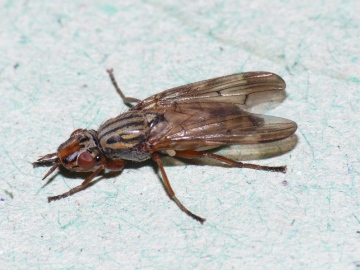Species Account for Dorycera graminum
Dorycera graminum (Fabricius, 1794)
Diptera: other groups: Ulidiidae

Reproduction for study and non-profit use permitted, all other rights reserved.
Taxonomic group: flies (other) (Diptera: other groups) - County data
View time series maps for Dorycera graminum
member log-on for taxon report
Status: RDB 3;Section 41 Priority Species
Images
upload a new image
Species text
Dorycera graminum is associated with grassland, but there is no consistent interpretation of habitat requirements. The species has undergone a marked decline in numbers and range, and the UK Action Plan shows records from only three post 1989 10km squares in the East Thames Corridor. Ismay (2000) reviews records and possible life histories, and shows further post 1970 records, all but three in the East Thames Corridor and north Kent. The distribution map here needs to be interpreted with the understanding that recent sites have been lost and many more are under huge development threats.
The biology of the species remains uncertain. Adults appear to spend almost all their time resting on various leaves, stems or flowers, and although the largest number of individuals have been swept or observed on herbaceous plants, they have also been found on scrub or tree foliage. The larvae could be root feeders. There is some indirect evidence for this where cutting of the grassland at a site in West Thurrock during 2003 at a time when larval development would have been taking place, resulted in large numbers of smaller adults the following year. This might be the result of less vigorous root resources available to larvae. However there is still no clear indication of what plant species might be host (Harvey, 2004), although the elongate flattened head and elongated body is a feature of several flies living in the confined environment of grass, rush or sedge stems and there is some possibility that D. graminum may live in couch-grass Elytrigia sp. (Agropyron) inflorescences (Ismay, 2000).
The UKBAP objectives and targets are to maintain populations at all known sites and to enhance population size at all known sites by 2010. The UKBAP states that sites holding key populations of the species should be considered for notification as SSSIs, where this is necessary to secure their long-term protection and appropriate management. It also states that where possible, all occupied sites are appropriately managed by 2005, for example through SSSI or agri-environment scheme management agreements. References
Habitats
Recorded management for locations with Dorycera graminum
Recorded substrate and hydrology for locations with Dorycera graminum
Why not join the Club, register and add a new species page
Interpretation of distribution maps





















